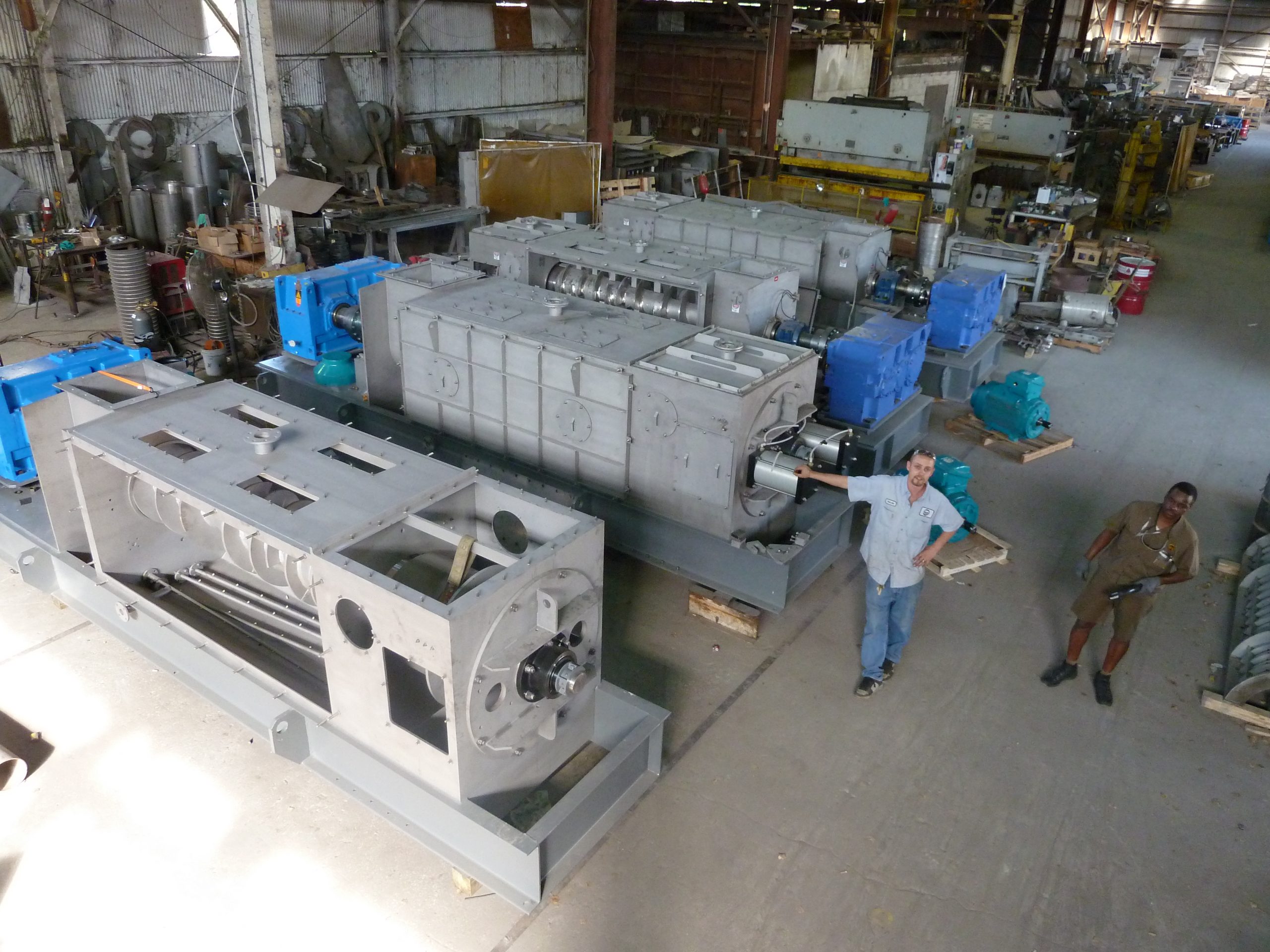September 17, 2020
Vincent has designed and manufactured vapor tight screw presses for over forty years. Traditionally these have been used for producing feed ingredients: pectin, soybean protein concentrate, and Xanthan gum. However in the last couple years over fifty have been sold for extracting CBD from cannabis. Because of this we have had frequent queries about injecting inert gas as a safety precaution.
Typically nitrogen is used, although much more economical boiler flue gasses have also been employed.
There are two methods of employing inert gas to assure safety in operation of the press. The screw press can be visualized as having two vapor tight compartments. One compartment is around the screen of the press, and the other is around the cake discharge.
The most common system is to have an opening between the two compartments. Inert gas is admitted to the Screen Compartment. Typically the inlet port is at the lower portion of the press, at the inlet to the screen area. Inert gas passes through this compartment and flows into the Cake Discharge Compartment. The vapors are drawn off through a flanged opening on the top of the cover over the Discharge Compartment.
These vapors, along with vapors from tanks, conveyors, and other apparatus, flow to a condenser where solvent is recovered.
An oxygen meter can be installed to measure the oxygen in the vapors leaving the press. This will sound an alarm if an excessive amount of oxygen is detected. This can result from an open inspection port or a failed gasket on a cover. The LEL (Lower Explosive Limit) for alcohol ranges from 20,000 to 33,000 ppm, 2.0% to 3.3%.
The alternative system is used by only one Vincent customer. They operate with two separate compartments. Inert gas is admitted to the bottom of the Screen Compartment, and it is drawn off from the top cover of the Screen Compartment. An oxygen meter monitors this flow.
The Cake Discharge Compartment has a flow of air coming from a tank or screw conveyor below the cake discharge. This air flows out through a flange on the top cover of the Cake Discharge Compartment. Here they have a solvent meter. An alarm is set for when excessive solvent is detected in the air flow. A high reading indicates that solvent is flowing past the cake discharge pressure cone of the press.
Vapor tight presses are operated with either a slight vacuum under the covers or a slight pressure. Operating with a slight vacuum is strongly preferred. Operating with a slight pressure will result in solvent leaking from the shaft seals where the screw shaft enters from the drive into the inlet hopper of the press. Also, leakage can come from the gaskets which seal the covers of the press. This results in excessive loss of solvent and a possible safety hazard.
The covers over the screen and cake discharge compartments are designed and tested to have minimal leakage at pressures up to two bar. However, a vacuum (or pressure) of only few inches of water column is used in normal operation.
We know of only one installation where a rupture panel was employed. The panel, about 30 cm by 60 cm, was installed in one of the side covers of the Screen Compartment. Ductwork was installed from this panel out through the wall of the building. The feature was not included when they purchased a second press.
The control valves, pressure gauges, flow meters, and solvent and oxygen sensors (if any are used) for the inert gas injection system are not included by Vincent with the screw press.

ISSUE #328
